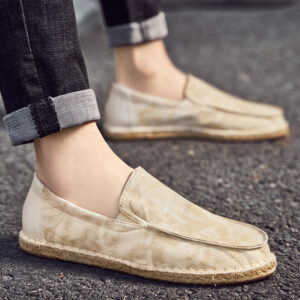Proper care and maintenance of hiking shoes can help prolong their lifespan and ensure optimal performance.
Here are some tips for caring for and maintaining hiking shoes:
Cleaning: Regularly clean your hiking shoes to remove dirt, mud, and debris. Use a soft brush or cloth to gently scrub the shoes, paying attention to the outsoles, uppers, and laces. Avoid using harsh chemicals or abrasive materials that could damage the shoe’s materials.
Drying: After hiking in wet conditions or cleaning your shoes, allow them to air dry naturally at room temperature. Avoid exposing them to direct sunlight or using heat sources like hair dryers, as excessive heat can deform or damage the shoe materials. Remove the insoles if possible to allow for better airflow and faster drying.
Waterproofing: If your hiking shoes have waterproof membranes or treatments, periodically reapply a waterproofing product to maintain their water resistance. Follow the manufacturer’s instructions on the appropriate products and application methods.
Laces and Hardware: Inspect and replace worn or frayed laces as needed. Check the hardware such as eyelets, hooks, or D-rings for any damage or corrosion. Repair or replace any faulty or damaged hardware to ensure secure lacing and proper fit.
Insole Maintenance: Remove and clean the insoles of your hiking shoes regularly. This helps to prevent odor buildup and maintains cushioning and support. Some insoles are machine washable, but always check the manufacturer’s instructions for specific care recommendations.
Outsole Inspection: Check the condition of the outsoles for any signs of excessive wear or damage. Replace the shoes or have the outsoles resoled if the tread pattern is significantly worn down or if there are deep cuts or cracks that could affect traction.
Storage: When not in use, store your hiking shoes in a cool, dry place. Avoid storing them in a damp or humid environment, as this can promote the growth of mold or mildew. Consider using shoe trees or stuffing them with newspaper to help maintain their shape.
Rotate Shoes: If possible, rotate between multiple pairs of hiking shoes. This allows each pair to dry out completely between uses and helps to reduce wear and tear on a single pair.
Regular Inspections: Periodically inspect your hiking shoes for any signs of wear, damage, or deterioration. Look for loose stitching, separated soles, or any other issues that may need attention. Addressing these problems early can help prevent further damage and potential discomfort during hikes.
Follow Manufacturer’s Guidelines: Refer to the manufacturer’s care instructions or recommendations specific to your hiking shoes. They may provide additional guidelines or precautions for cleaning, maintenance, and specific materials used in your shoes.
By following these care and maintenance tips, you can keep your hiking shoes in good condition, ensuring they remain comfortable, durable, and perform optimally on your hiking adventures.
How should hiking shoes fit for optimal comfort and performance?
Proper fit is crucial for both comfort and performance when it comes to hiking shoes.
Here are some guidelines for ensuring optimal fit:
Toe Room: Your toes should have enough room to wiggle comfortably inside the shoe. There should be a thumb’s width of space between the tip of your longest toe (usually the big toe) and the front of the shoe. This allows for natural movement and helps prevent toe discomfort or injuries on downhill descents.
Snug Heel Fit: The heel of your foot should fit securely in the shoe without any slippage or excessive movement. A snug heel fit helps prevent blisters and provides better stability on uneven terrain. Make sure the heel doesn’t lift when walking or hiking uphill.
Arch Support: The shoe should have appropriate arch support that matches the shape of your foot. It should feel comfortable and provide adequate support to prevent arch fatigue or discomfort during long hikes. Consider using aftermarket insoles or orthotics if additional support is needed.
Width: The shoe should provide a comfortable fit across the width of your foot. It should neither squeeze nor excessively loosen your foot. China Hiking Shoes manufacturer Look for hiking shoe models that offer width options to accommodate different foot shapes.
Socks: Try on hiking shoes with the type of socks you plan to wear during hikes. This ensures a more accurate fit. Wear moisture-wicking and properly cushioned hiking socks that reduce friction and provide additional comfort.
Break-In Period: Allow time for your hiking shoes to break in before embarking on long hikes. Wear them for shorter walks or hikes initially to give your feet and the shoes time to adjust and mold to each other. This helps prevent discomfort and blisters during longer outings.
Flexibility: Hiking shoes should have a certain level of flexibility to allow natural foot movement. They should allow you to bend and flex your foot without restriction. However, they should still provide enough support and stability to protect your feet on rugged terrain.
Try Them On: It’s essential to physically try on hiking shoes before purchasing them. Visit a reputable outdoor retailer and try on different models and sizes. Walk around the store, preferably on an incline or simulated trail surface, to assess how they feel and perform.
Remember that everyone’s feet are unique, and what works for one person may not work for another. It’s important to find hiking shoes that cater to your specific foot shape, arch type, and hiking preferences. Take the time to try on different brands and models to find the best fit for your feet.
